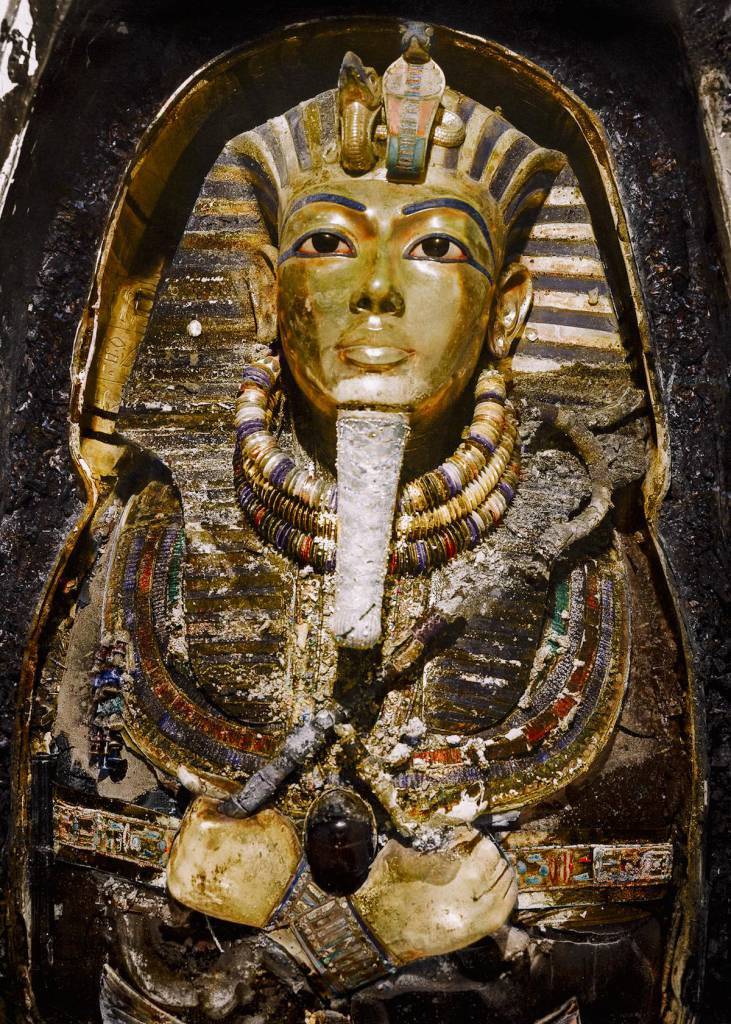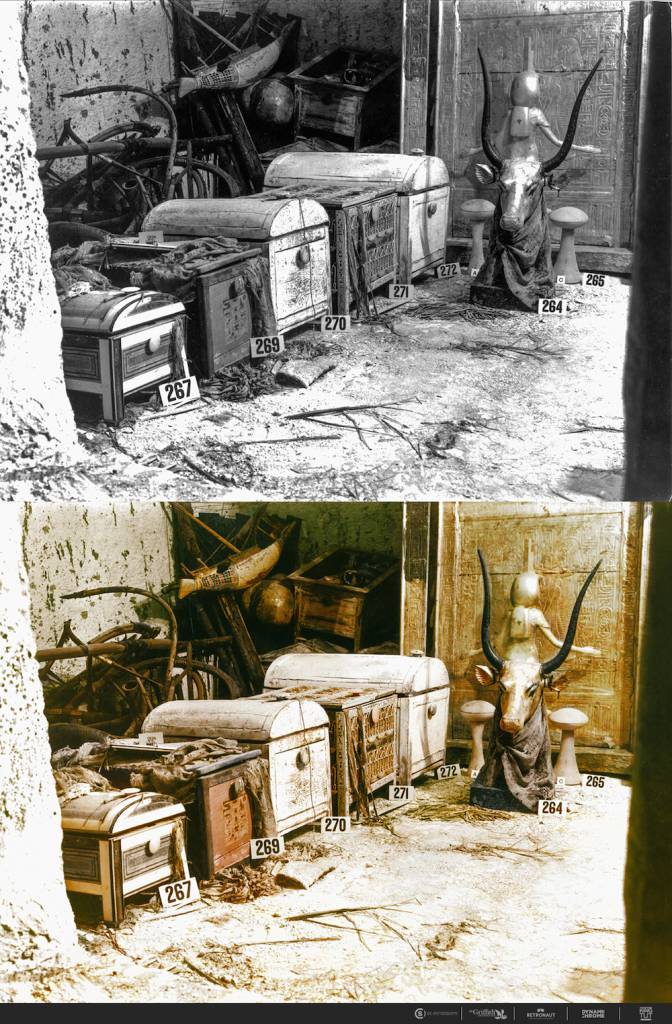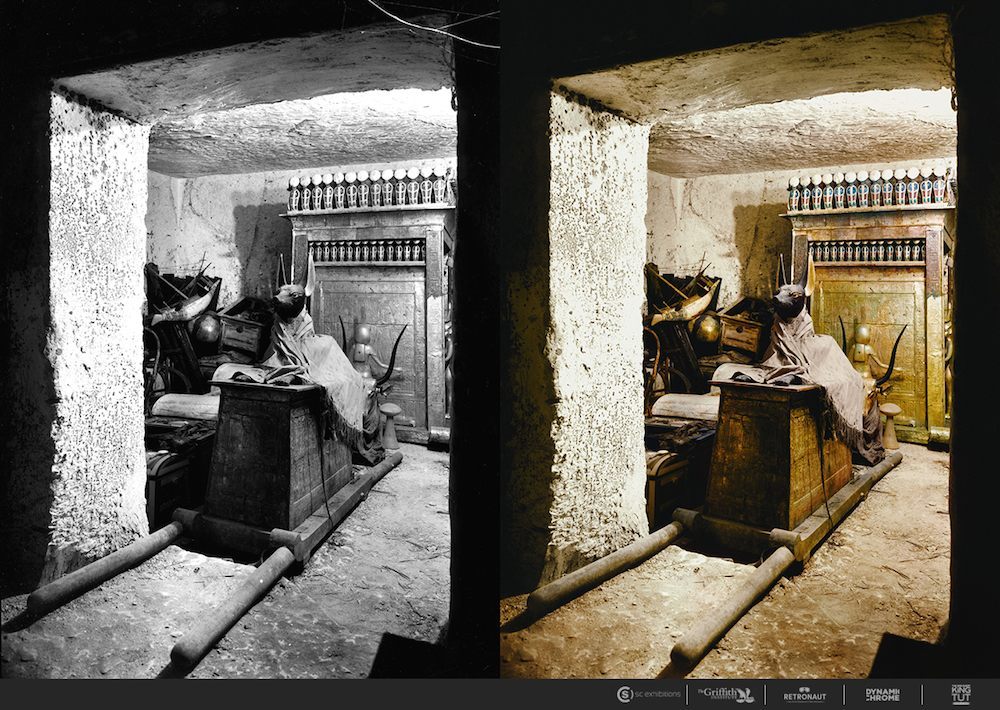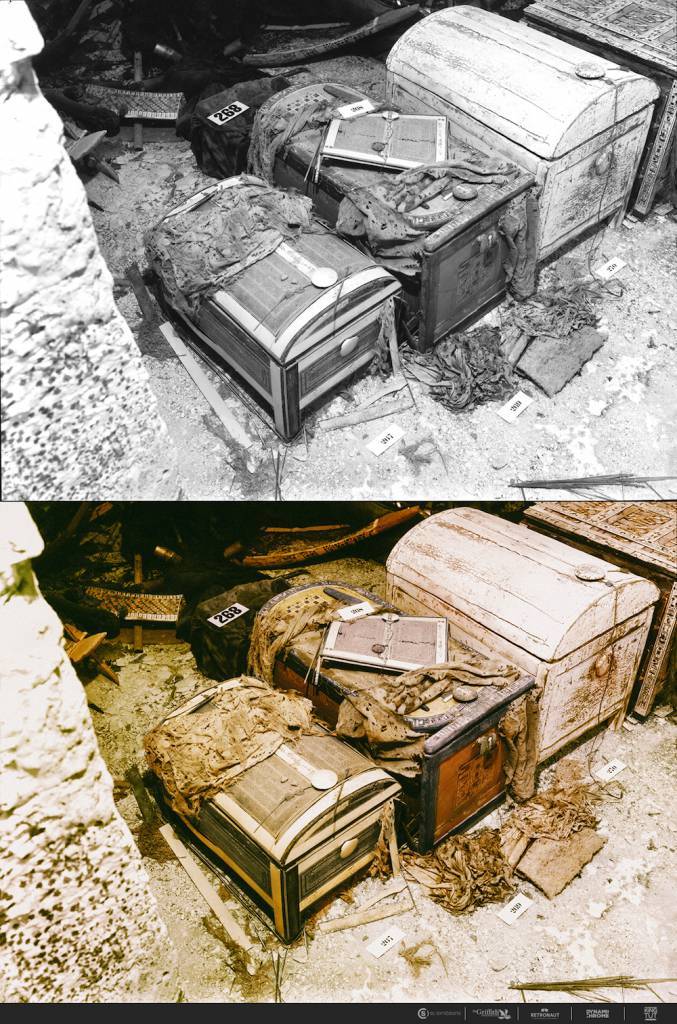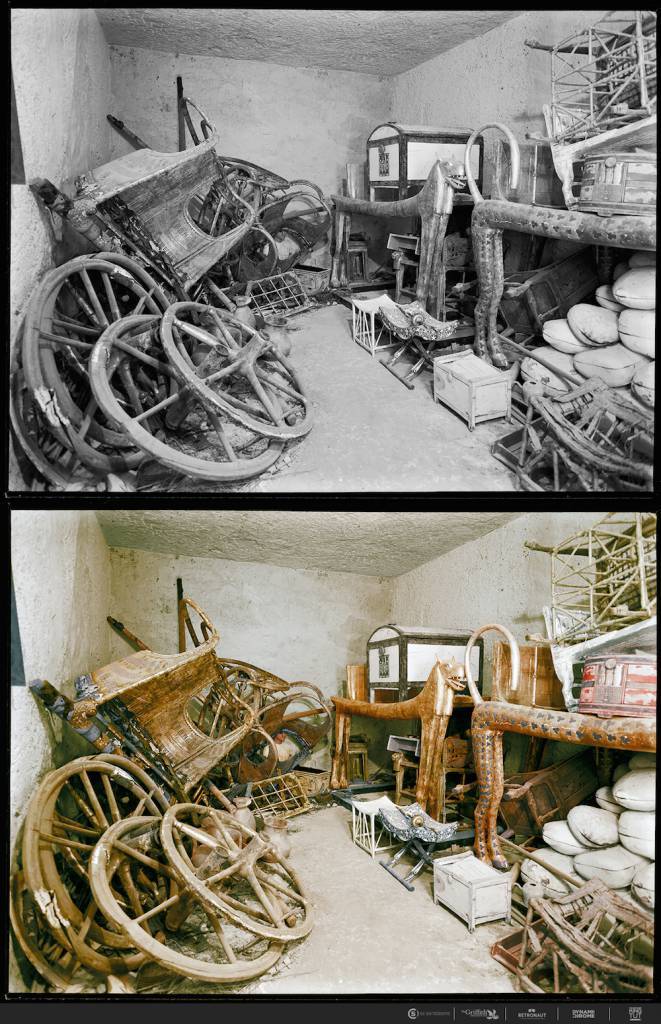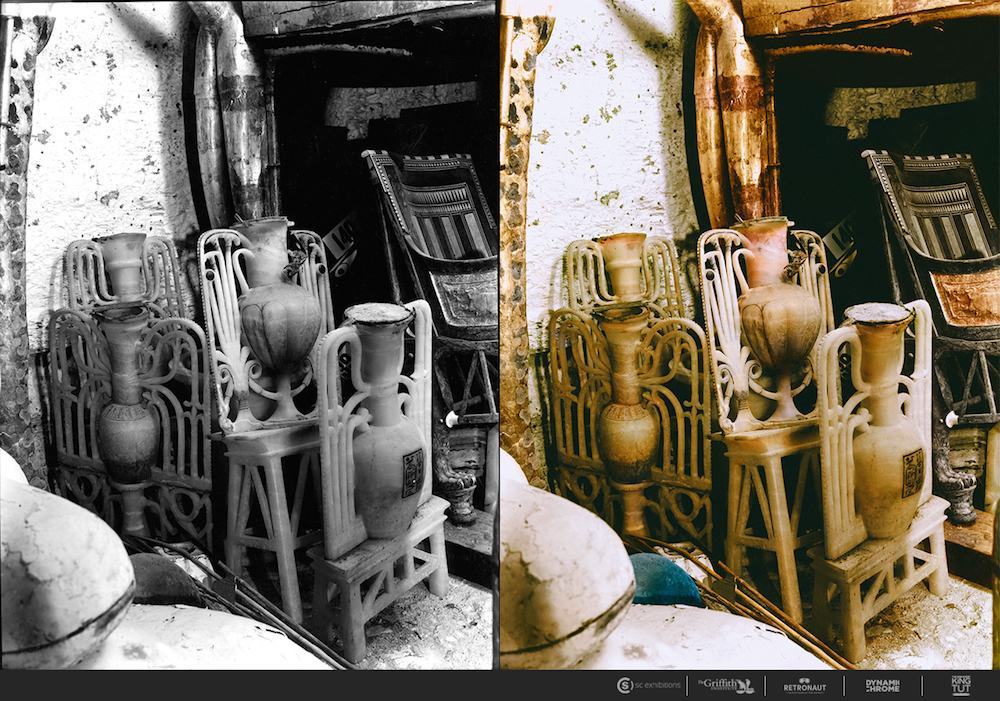“I think at the moment we did not even want to break the seal [on the inner chamber of the tomb of Tutankhamen], for a feeling of intrusion had descended heavily upon us…. We felt that we were in the presence of the dead King and must do him reverence, and in imagination could see the doors of the successive shrines open one after the other till the innermost disclosed the King himself” – Howard Carter
In November 1922 Howard Carter, funded by the 5th Earl of Carnarvon, was looking for the past in Egypt.
On November 5th 1922, Carter wrote in his diary: “Discovered tomb under tomb of Ramsses VI investigated same & found seals intact.”
On November 26 1922 he found a door in the sands and the rock. It led to the tomb of king Tutankhamun (1332 – 1323 BC). Inside were fabulous treasures and the golden sarcophagus containing the king’s mummified remains.
Now Dynamichrome have colorized Harry Burton’s photographs (via The Griffith Institute) for The Discovery of King Tut, opening in New York on Nov. 21, 2015.
This is time travel come alive…
“With such evidence, as well as the sealed doorway between the two guardian statues of the King, the mystery gradually dawned upon us. We were but in the anterior portion of a tomb” – Carter
“With such evidence, as well as the sealed doorway between the two guardian statues of the King, the mystery gradually dawned upon us. We were but in the anterior portion of a tomb” – Carter
“As my eyes grew accustomed to the light, details of the room within emerged slowly from the mist, strange animals, statues, and gold – everywhere the glint of gold. For the moment – an eternity it must have seemed to the others standing by – I was struck dumb with amazement, and when Lord Carnarvon, unable to stand the suspense any longer, inquired anxiously, ‘Can you see anything?,’ it was all I could do to get out the words, ‘Yes, wonderful things’” – Carter
“We were astonished by the beauty and refinement of the art displayed by the objects surpassing all we could have imagined – the impression was overwhelming” – Carter
“The news of the discovery spread fast all over the country, and inquisitive enquiries mingled with congratulations from this moment became the daily programme” – Carter
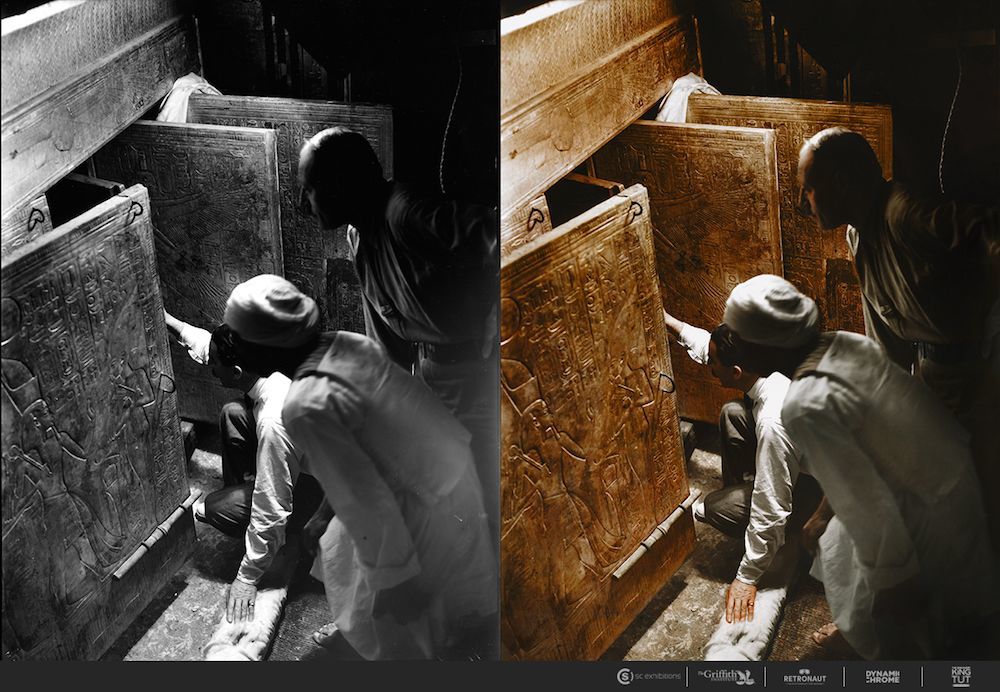
Jan. 4, 1924
Howard Carter, Arthur Callender and an Egyptian worker open the doors of the innermost shrine and get their first look at Tutankhamun’s sarcophagus.
The Photographer:
The photographer Harry Burton documented every aspect of the work in Tutankhamun’s tomb, from the first inventory-taking to the transfer of the last find to the Egyptian Museum in Cairo. Only in Burton’s photographs did the young pharaoh achieve true immortality.
The Metropolitan Museum sent Burton as the excavation photographer; he was “Carter’s eye and memory.” With his enormous camera and cumbersome negative plates, Burton tirelessly trekked between the discovery site, his laboratory (which he had set up in the tomb of King Seti II) and his improvised darkroom in neighboring tomb KV 55 (all tombs in the Valley of the Kings are identified by a KV number – Tutankhamun’s tomb is KV 62).

Dec. 30th, 1923
Carter, Mace and an Egyptian worker carefully roll up the linen pall covering the second shrine.
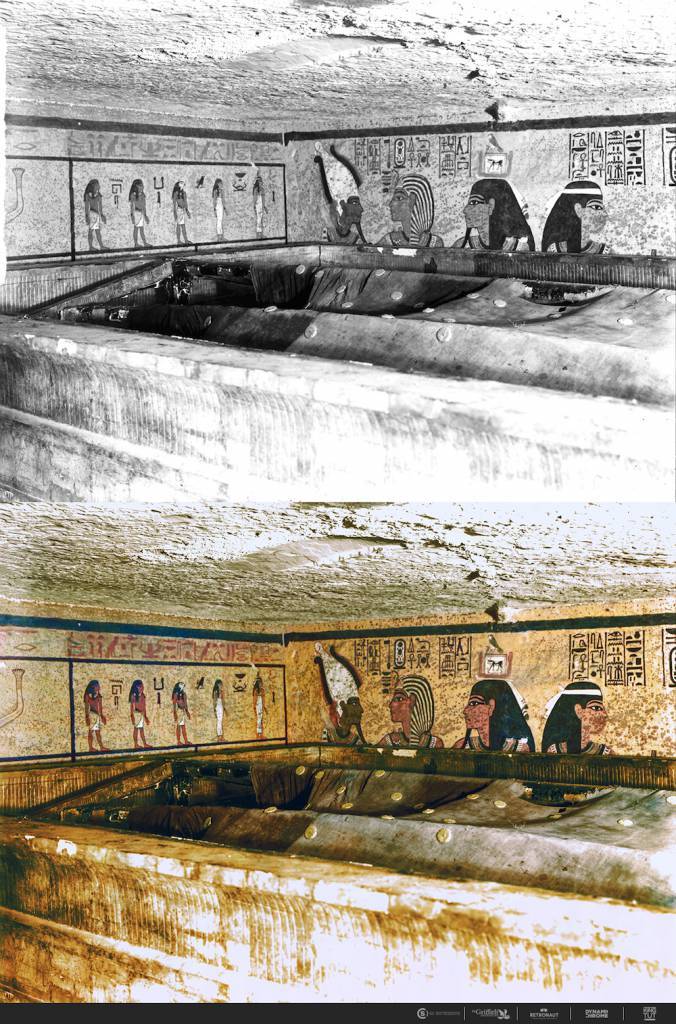
December 1923
Inside the outermost shrine in the burial chamber, a huge linen pall with gold rosettes, reminiscent of the night sky, covers the smaller shrines within.

December 1923
Carter, Callender and two Egyptian workers carefully dismantle one of the golden shrines within the burial chamber.

December 1923
Arthur Mace and Alfred Lucas work on a golden chariot from Tutankhamun’s tomb outside the “laboratory” in the tomb of Sethos II.
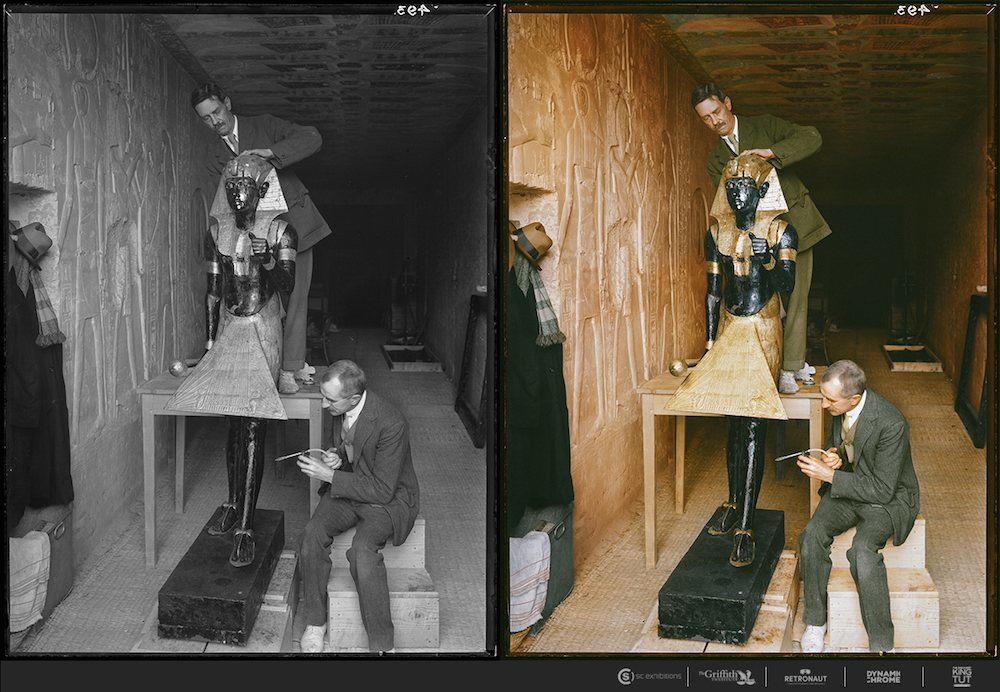
January 1924
In a “laboratory” set up in the tomb of Sethos II, conservators Arthur Mace and Alfred Lucas clean one of the sentinel statues from the antechamber.
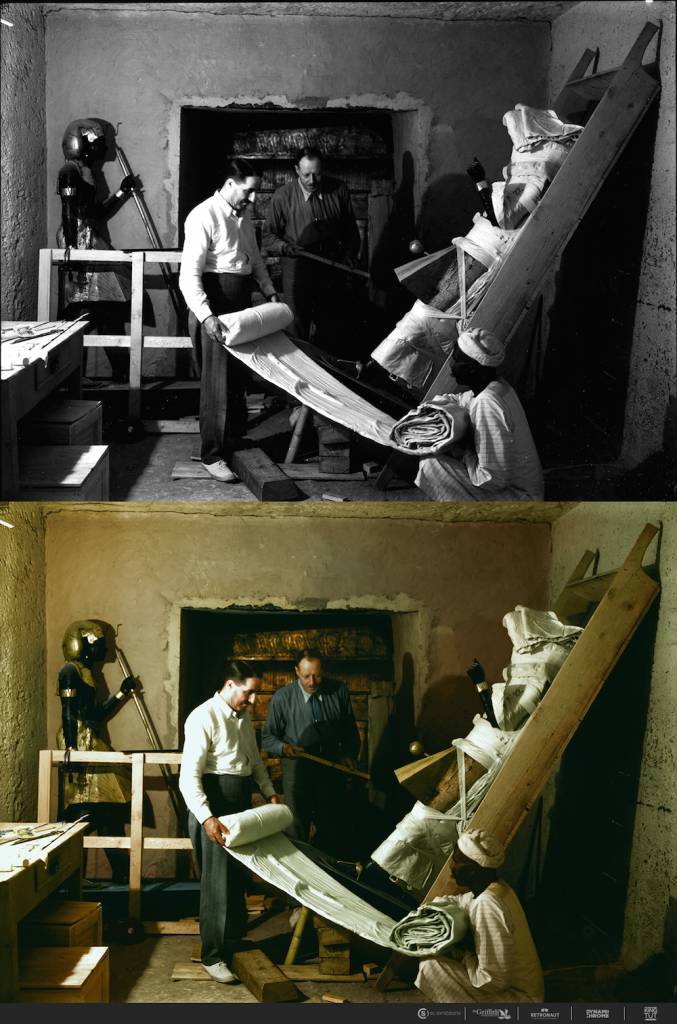
Nov. 29, 1923
Howard Carter, Arthur Callender and an Egyptian worker wrap one of the sentinel statues for transport.
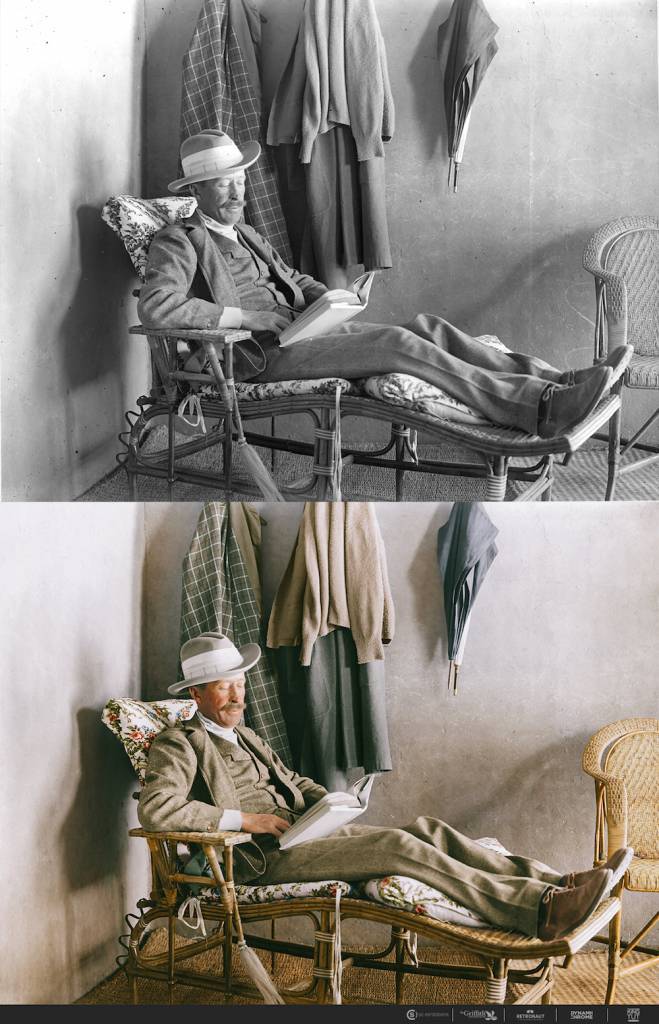
c. 1923
Lord Carnarvon, financier of the excavation, reads on the veranda of Carter’s house near the Valley of the Kings.
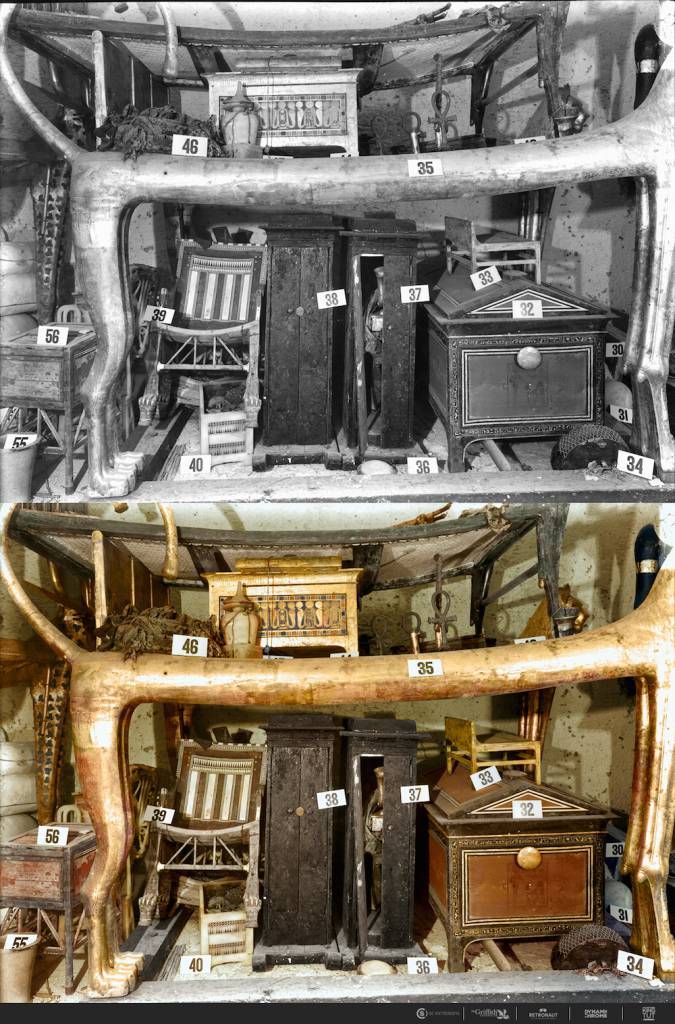
December 1922
Under the lion bed in the antechamber are several boxes and chests, and an ebony and ivory chair which Tutankhamun used as a child.
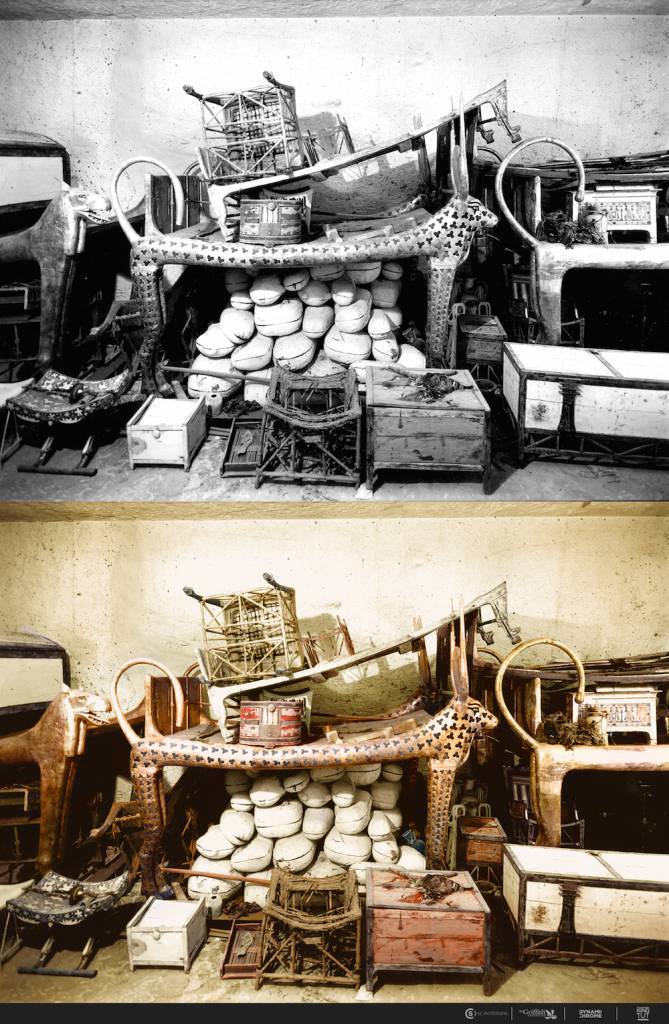
December 1922
A ceremonial bed in the shape of the Celestial Cow, surrounded by provisions and other objects in the antechamber of the tomb.
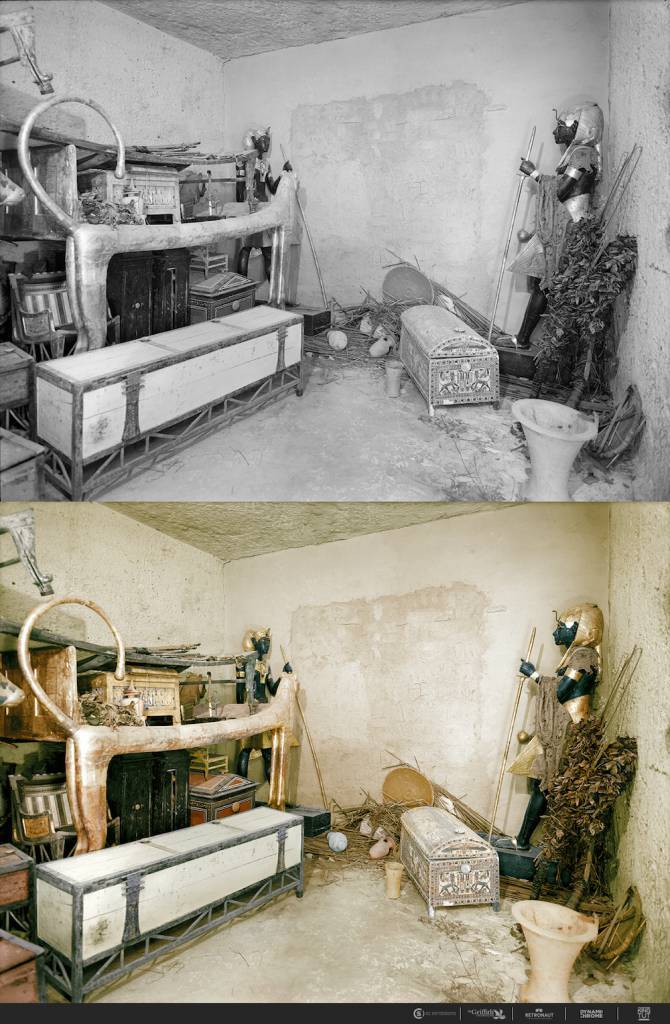
December 1922
A gilded lion bed, clothes chest and other objects in the antechamber. The wall of the burial chamber is guarded by statues.
Via Dynamichrome
Would you like to support Flashbak?
Please consider making a donation to our site. We don't want to rely on ads to bring you the best of visual culture. You can also support us by signing up to our Mailing List. And you can also follow us on Facebook, Instagram and Twitter. For great art and culture delivered to your door, visit our shop.
